Org. Synth. 2008, 85, 219
DOI: 10.15227/orgsyn.085.0219
HIGH-YIELDING, LARGE-SCALE SYNTHESIS OF N-PROTECTED-β-AMINONITRILES: TERT-BUTYL (1R)-2-CYANO-1-PHENYLETHYLCARBAMATE
Submitted by Fathia Mosa
1, Carl Thirsk
1, Michel Vaultier
2, Graham Maw, and Andrew Whiting
1.
Checked by Robert B. Lettan II
3 and Peter Wipf
3.
1. Procedure
A. tert-Butyl (1S)-2-hydroxy-1-phenylethylcarbamate. An oven-dried, 3-L, three-necked, round-bottomed flask is equipped with a nitrogen inlet adapter, a rubber septum, a 200-mL pressure equalizing dropping funnel (placed in the central neck of the flask and fitted with a rubber septum) and a 3.2 cm × 1.6 cm, egg shaped, Teflon-coated magnetic stirring bar. The flask is flushed with nitrogen and charged with sodium borohydride (30.0 g, 0.793 mol, 2.4 equiv) (Note 1) and 500 mL of anhydrous THF (Note 2). The resulting suspension is cooled in an ice bath and stirred rapidly. The pressure-equalizing dropping funnel is charged with a previously prepared solution of iodine (83.9 g, 0.331 mol, 1.0 equiv) (Note 3) in 150 mL of anhydrous THF (Note 2). The iodine-THF solution is added dropwise to the borohydride-THF suspension over 1.5 h (Note 4). Once addition is complete, the dropping funnel is removed and replaced by a water-cooled condenser fitted to the central neck of the flask. (S)-Phenylglycine (50.0 g, 0.331 mol) (Note 5) is then added to the mixture in small portions (Note 6). After the (S)-phenylglycine has been added, the ice-bath is replaced by an oil bath and the reaction mixture is heated at reflux under nitrogen for 18 h (Note 7). After this period, the solution removed from the oil bath and is placed in an ice-bath for 20 min, then 60 mL of methanol is very cautiously added (Note 8). After evolution of gas has ceased, the reaction mixture is diluted with 250 mL of anhydrous THF and triethylamine (48.6 mL, 35.3 g, 0.347 mol, 1.05 equiv) (Note 9) is added in one portion. With vigorous stirring, di-tert-butyl dicarbonate (72.9 g, 0.334 mol, 1.01 equiv) is added portionwise (Note 10), followed by 200 mL of anhydrous THF (Note 11). The mixture is allowed to warm to room temperature and was stirred for 3 h. After this time, the solvents are removed in vacuo (Note 12) and the resulting white solid is suspended in 400 mL of ethyl acetate and 300 mL of water and stirred vigorously. The white residues are dispersed by the gradual addition of 400 mL of a 1:1 solution of 1.2 N aqueous HCl and brine. After being stirred for 20 min, the mixture is poured into a 3-L separatory funnel and is shaken with 200 mL of ethyl acetate and the phases are separated. The aqueous phase is further extracted with ethyl acetate (2 × 200 mL) and the combined organic phases are then shaken with a 1:1 solution of 0.6 N HCl and brine (200 mL), followed by a 1:1 solution of sat. aq. sodium hydrogen carbonate and brine (200 mL), and finally, water (200 mL). The organic phase is dried over anhydrous sodium sulfate (100 g), filtered, and the solvent removed in vacuo (Note 12) to leave 100 mL of mother liquor. After addition of 300 mL of hexane, the solution is chilled at −20 °C for 12 h to induce precipitation. The mixture is then filtered through a 90 -mm Büchner funnel (fitted with 90-mm diameter Whatman 1 filter paper) to obtain crude tert-butyl (1S)-2-hydroxy-1-phenylethylcarbamate and the filtrate is kept. The crude product is purified by repeated recrystallization from dichloromethane-cyclohexane (3 crops) (Note 13) to afford 71.1 g (91%) of tert-butyl (1S)-2-hydroxy-1-phenylethylcarbamate as white needles after drying in vacuo (Note 12). The clear filtrate kept from each recrystallization is combined, concentrated in vacuo (Note 12), and the resulting mixture (usually an off-white solid or a sticky cream foam) purified by column chromatography (Note 14) yielding a further 2.68 g (3.4%) of tert-butyl (1S)-2-hydroxy-1-phenylethylcarbamate after removal of solvents and drying in vacuo (Note 12). Total yield of tert-butyl (1S)-2-hydroxy-1-phenylethylcarbamate is 73.8 g (94%) obtained as white needles (Note 15).
B. (2S)-2-[(tert-Butoxycarbonyl)amino]-2-phenylethyl methane-sulfonate. An oven-dried, 1-L, three-necked, round-bottomed flask is equipped with a nitrogen inlet adapter, a rubber septum, a 200-mL pressure equalizing dropping funnel fitted with a rubber septum, and a 3.2 cm × 1.6 cm, egg shaped, Teflon-coated, magnetic stirring bar. The flask is flushed with nitrogen and charged with tert-butyl (1S)-2-hydroxy-1-phenylethylcarbamate (20.0 g, 0.0843 mol), 200 mL of dry dichloromethane (Note 16), and freshly distilled triethylamine (17.4 mL, 12.6 g, 0.126 mol, 1.5 equiv) (Note 9), then is cooled in an ice bath. The dropping funnel is charged with a solution of methanesulfonyl chloride (6.86 mL, 10.1 g, 0.0885 mol, 1.05 equiv) (Note 17) and 100 mL of dry dichloromethane, which is then added to the flask dropwise over 1 h. The reaction mixture is stirred at <20 °C for 12 h (Notes 18, 19), after which time 150 mL of sat. aq. sodium hydrogen carbonate solution are added. After being stirred for a 20 min, the mixture is poured into a 1-L separatory funnel and the phases are separated. The aqueous phase is extracted with dichloromethane (2 × 100 mL) and the combined organic phases are then washed with saturated sodium chloride solution (2 × 100 mL). After drying the organic phase over anhydrous magnesium sulfate (20 g), the solvents are filtered, then are removed in vacuo (Notes 12 and 20) to yield 27.8 g (105%) of an off-white solid that is recrystallized from dichloromethane-hexane (Note 13) to give (2S)-2-[(tert-butoxycarbonyl)amino]-2-phenylethyl methanesulfonate (25.0 g, 94%) as a cream powder (Note 21).
C. tert-Butyl (1R)-2-cyano-1-phenylethylcarbamate. An oven-dried, 1-L, round-bottomed flask is equipped with a nitrogen inlet adapter and a 3.2 cm × 1.6 cm, egg shaped, Teflon-coated, magnetic stirring bar. The flask is charged with (2S)-2-[(tert-butoxycarbonyl)amino]-2-phenylethyl methanesulfonate (20.0 g, 0.0634 mol) and purged with nitrogen. After addition of 300 mL of anhydrous DMSO (Note 22), sodium cyanide (9.32 g, 0.190 mol, 3.0 equiv) (Note 23, CAUTION!) is added in one portion and the mixture is then stirred for 18 h in a thermostat-controlled oil bath set at 45 °C (Note 24). After this time, the reaction mixture is cooled to 0 °C in an ice bath, and 400 mL of water is added. The mixture is poured into a 2-L separatory funnel and the DMSO-H2O phase is extracted with diethyl ether (3 × 200 mL) (Note 25). The combined ether extracts are washed with saturated sodium chloride solution (3 × 200 mL), water (2 × 200 mL) and then are dried over anhydrous magnesium sulfate (50 g) and then are filtered. Removal of the solvent in vacuo (Note 12) gives a white solid that is recrystallized from dichloromethane-hexane (Note 13) to yield tert-butyl (1R)-2-cyano-1-phenylethylcarbamate (12.0 g, 77%) as white crystals (Note 26).
2. Notes
1.
Sodium borohydride was obtained from Aldrich Chemical Company and was used as received.
2.
Tetrahydrofuran was obtained from Fisher Chemicals and was distilled under argon (at atmospheric pressure) from sodium benzophenone ketyl.
3.
Iodine (99.8%) was obtained from Fisher Chemicals and was used as received. The THF-iodine solution is best prepared by weighing the iodine into a conical flask fitted with a septum and containing a magnetic stirrer bar, flushing the flask with argon, charging with THF and stirring rapidly until the iodine has dissolved. The THF-iodine solution can be transferred to the dropping funnel by cannula, or by quickly pouring under a stream of argon.
4.
The THF-iodine solution should be added to the sodium borohydride suspension at such a rate that it reacts instantly with the borohydride and the reaction remains white. After all the iodine has been added, the mixture should have a milky white appearance.
5.
(S)-Phenylglycine (>98%) was obtained from Alfa Aesar and used as received.
6.
(
S)-Phenylglycine is typically added portionwise over 1 h. Mild effervescence and a slight exotherm is observed. As a precaution, the rubber septum is removed from the condenser to allow direct venting.
7.
The nitrogen inlet is moved to the top of the condenser and a glass stopper is put in the neck of the flask. Upon heating the reaction mixture, effervescence and considerable volumes of hydrogen are evolved; adequate care should be taken to ensure this is safely vented; as a precaution, the rubber septum is removed from the condenser to allow direct venting.
8.
General reagent grade methanol can be used. Quenching with methanol is to be carried out very cautiously, adding 1 mL at a time with rapid stirring until the effervescence begins to abate. Again, a considerable volume of hydrogen may be evolved so adequate precautions to vent should be taken.
9.
Triethylamine was obtained from Fisher Chemicals and was distilled at atmospheric pressure from calcium hydride immediately prior to use.
10.
Di-tert-butyl dicarbonate (>98%) was obtained from Advanced Asymmetrics, Inc. and was used as received. It was convenient to melt the reagent by placing the bottle in hot water, before weighing and adding it portionwise as a liquid to the reaction mixture.
11.
Upon addition of the di-
tert-butyl dicarbonate, the reaction mixture has a tendency to thicken considerably. Adding more THF should resolve any difficulties with stirring.
12.
In vacuo denotes solvent evaporation using a Büchi rotary evaporator at a water temperature of ca. 30 °C and a ca. 15 mmHg vacuum, followed by drying under higher vacuum (ca. 0.5 mmHg).
13.
As with all subsequent recrystallizations, the organic material is dissolved in the minimum quantity of the hot polar solvent (in this case refluxing dichloromethane), then is cooled, and the cold non-polar solvent (hexanes) added until the solution becomes cloudy. The solution is then refrigerated for 1-2 h, and the crystals collected by Büchner filtration and washed with cold non-polar solvent, keeping the filtrate for further re-concentration and subsequent recrystallizations, or column chromatography. Specifically, the crude
tert-butyl (1
S)-2-hydroxy-1-phenylethylcarbamate (Step A) was isolated from three subsequent recrystallizations: The crude material was taken up in
300 mL of hot dichloromethane, cooled to ambient temperature, and diluted with 60 mL of hexanes, to afford 61.6 g (78%) of the pure product after filtration. The remaining crude material was dissolved in 50 mL of hot dichloromethane, followed by
10 mL of hexanes, to afford 8.43 g (11%) of the pure product after filtration. Finally, the crude material was taken up again in 10 mL of hot dichloromethane, followed by 2 mL of hexanes, to afford 1.11 g (1%) of the pure product after filtration. The crude (2
S)-2-[(
tert-butoxycarbonyl)amino]-2-phenylethyl methanesulfonate (Step B) was dissolved in
100 mL of hot dichloromethane and then was diluted with
20 mL of hexanes, to afford 25.0 g (94%) of the pure product after filtration. The crude
tert-butyl (1
R)-2-cyano-1-phenylethylcarbamate (Step C) was dissolved in
30 mL of hot dichloromethane and then was diluted with
6 mL of hexanes, to afford 12.0 g (77%) of the pure product after filtration.
14.
Column chromatography was performed under medium pressure. A 4.5-cm diameter column was slurry packed with 300 mL of SiO
2 (EMD silica gel 60, 230–400 mesh). The compound was loaded in the eluent and 20-mL fractions were collected. TLC was carried out on EMD silica gel 60 F
254 glass backed plates, visualized using a potassium permanganate stain, which gave yellow stains in all cases. The elution solvent was 1:5 ethyl acetate/hexanes.
15.
The product displayed the following physicochemical properties: mp 136-138 °C (cyclohexane/dichloromethane), lit. value 137–138 °C;
4a [a]
25D +36.1 (
c 1.67, CHCl
3), lit. [a]
22D +39.4 (
c 1.67, CHCl
3);
4a TLC R
f 0.19 (diethyl ether/hexane, 1:1);
1H NMR
pdf (300 MHz, CDCl
3) δ: 1.44 (s, 9 H), 2.35 (bs, 1 H), 3.85 (bd,
J = 3.9 Hz, 2 H), 4.78 (bs, 1 H), 5.25 (bd, 1 H,
J = 6.3 Hz), 7.28-7.40 (m, 5 H);
13C NMR
pdf (125 MHz) δ: 28.4, 56.9, 66.9, 80.0, 126.6, 127.7, 128.8, 139.5, 156.2; IR
(film) cm
−1: 3246, 3060-2900 (several bands), 1670, 1366, 1054; HRMS (ES+)
m/z calcd for C
13H
19NO
3Na (M
++Na): 260.1263, found 260.1273. Enantiomeric purity was determined by chiral stationary phase HPLC: er >99:1 with a Chiralpak AD-H column (hexane/2-propanol, 95:5), flow rate 1.0 mL/min; λ = 254 nm; retention times, (
S)-enantiomer = 16.98 min, (
R)-enantiomer = 18.77 min. Anal. Calcd. for C
13H
19O
3N: C, 65.80; H, 8.07; N, 5.90. Found: C, 65.30; H, 8.07; N, 5.87.
16.
Anhydrous dichloromethane was obtained by atmospheric pressure distillation from calcium hydride under a nitrogen atmosphere.
17.
Methanesulfonyl chloride was obtained from Sigma-Aldrich Chemical Company and was purified by atmospheric pressure distillation from calcium hydride (from Sigma-Aldrich). The purified reagent was used immediately following distillation.
18.
The reaction temperature was conveniently maintained by simply allowing the ice-bath to melt and keeping the flask immersed in water. In this way, the bath temperature was found to remain at around 8–12 °C. Keeping the temperature low reduces the incidence of side-reactions (see discussion).
19.
The progress of the reaction can be monitored by disappearance of the starting material TLC (R
f = 0.19, silica gel, Et
2O/hexane, 1:1)
20.
Note that both organic solvent and the residual triethylamine need to be removed. Traces of triethylamine can be removed by placing the flask on a high-vacuum line for several hours after rotary evaporation.
21.
The product displays the following physicochemical properties: mp 113–115 °C, lit. value 112–114 °C;
8 [a]
25D +23.2 (
c 1.0, CHCl
3), lit. value for (
R)-enantiomer [a]
25D -21 (
c 1, CHCl
3);
9 TLC R
f 0.43 (diethyl ether/hexane, 1:1);
1H NMR
pdf (300 MHz, CDCl
3) δ: 1.44 (bs, 9 H), 2.88 (s, 3 H), 4.45, 4.48 (AB of ABX, 2 H,
JAB = 10.4 Hz,
JAX = 5.9 Hz,
JBX = 4.7 Hz), 5.02 (bs, 1 H), 5.19 (d, 1 H,
J = 7.2 Hz), 7.31-7.41 (m, 5 H);
13C NMR
pdf (75.5 MHz) δ: 28.3, 37.5, 46.0, 71.3, 80.3, 126.7, 128.3, 128.9, 137.7, 155.0; IR (film) cm
−1: 3381, 2979, 2937, 1699, 1520, 1391, 1357, 1173, 1052; HRMS (ES+)
m/z calcd for C
14H
21NO
5SNa (M
++Na): 338.1038, found 338.1015. Anal. Calcd. for C
14H
21NO
5S: C, 53.32; H, 6.71; N, 4.44. Found: C, 53.00; H, 6.75; N, 4.57.
22.
Anhydrous DMSO was obtained from EMD Biosciences and was used as received.
23.
Sodium cyanide was obtained from Fisher Chemicals and was used as received. Utmost care should be exercised when handling this reagent; maintain a supply of 10% aqueous bleach solution for washing any apparatus that comes into contact with it.
24.
The progress of the reaction can be monitored by disappearance of the starting material TLC (R
f = 0.43, silica gel, Et
2O/hexane, 1:1)
25.
Great care should also be exercised when handling solutions (DMSO and aqueous) containing sodium cyanide, and any apparatus that has come into contact with sodium cyanide or solutions therefore. All glassware should be washed thoroughly with a 10% bleach solution prior to normal cleaning. Aqueous waste containing residual NaCN should also be treated with 10% bleach solution before disposal.
26.
The product displays the following physicochemical properties: mp 110–112 °C, lit. value 112–113 °C;
4a [a]
25D +39.0 (
c 0.5, EtOH), lit. value [a]
25D +42.2 (
c 0.45, EtOH);
4a TLC R
f 0.55 (diethyl ether/hexane, 1:1);
1H NMR
pdf (300 MHz, CDCl
3) δ: 1.47 (s, 9 H), 2.98, 3.03 (AB of ABX, 2 H,
JAB = 16.4 Hz,
JAX = 4.5 Hz,
JBX = 5.8 Hz), 4.98 (bd, 1 H,
J = 5.1 Hz), 5.05 (bs, 1 H), 7.34-7.42 (m, 5 H);
13C NMR
pdf (75.5 MHz) δ: 25.2, 28.3, 51.3, 80.5, 117.1, 126.3, 128.6, 129.2, 138.6, 154.9; IR (film) cm
−1: 3377, 2980, 2940, 2249, 1685, 1519, 1367, 1274, 1252, 1170; HRMS (ES+)
m/z calcd for C
14H
18N
2O
2: 246.1368, found 246.1363. Enantiomeric purity was determined by chiral stationary phase HPLC: er >99:1 with a Chiralpak AD-H column (hexane/2-propanol, 90:10), flow rate 1.0 mL/min; λ = 254 nm; retention times, (
S)-enantiomer = 11.06 min, (
R)-enantiomer = 13.00 min. Anal. Calcd for C
14H
18N
2O
2: C, 68.27; H, 7.37; N, 11.37. Found C, 68.57, H, 7.28, N, 11.22.
Handling and Disposal of Hazardous Chemicals
The procedures in this article are intended for use only by persons with prior training in experimental organic chemistry. All hazardous materials should be handled using the standard procedures for work with chemicals described in references such as "Prudent Practices in the Laboratory" (The National Academies Press, Washington, D.C., 2011 www.nap.edu). All chemical waste should be disposed of in accordance with local regulations. For general guidelines for the management of chemical waste, see Chapter 8 of Prudent Practices.
These procedures must be conducted at one's own risk. Organic Syntheses, Inc., its Editors, and its Board of Directors do not warrant or guarantee the safety of individuals using these procedures and hereby disclaim any liability for any injuries or damages claimed to have resulted from or related in any way to the procedures herein.
3. Discussion
To the best of our knowledge there are only two reported examples of one-pot amino acid reduction/
N-protection sequences. Both employ lithium aluminum hydride (LAH) to achieve the reduction prior to
N-protection with Boc
2O, affording the
N-Boc-amino alcohols in 69–83% yield.
4 In all other instances, the amino alcohol, usually obtained
via LAH, activated borohydride or mixed anhydride reductions, is isolated prior to
N-protection and the often extensive aqueous work-up required following the reduction methods cited leads to diminished yields.
5 The protocol described herein employs the safer borohydride-iodine system
6 and avoids the isolation of the intermediate amino alcohol.
Documented conditions for the formation of
O-sulfonylates of
N-Boc-amino alcohols vary considerably, and in our hands proved unworkable or unreliable in most instances. Regarding the
N-Boc-phenylglycinol system, it has to be noted that cyclization to the 4-phenyloxazolidin-2-one is a facile process occurring even at ambient temperature (particularly if less than totally pure reagents are used); indeed this is a documented method for the preparation of these useful chiral auxillaries.
7 In this regard, we have found that use of up to two equivalents of sulfonyl chloride (methanesulfonyl of
p-toluenesulfonyl chloride) in either pyridine or triethylamine with or without DMAP at ambient temperatures often leads to significant formation of this by-product; additionally yields are only moderate to good (55–75%).
4b The added disadvantage is the need to remove the excess sulfonyl chloride, which is a more serious issue with
p-toluenesulfonyl chloride. We found shorter reactions times (0.33–1.5 h) at lower temperatures (−15 to 0 °C) to be unsuitable since the reactions often fail to go to completion. Crucially, we noted that rigorous purification of reagents (particularly the sulfonyl chlorides) is a prerequisite for obtaining the
O-sulfonylates in high yields, allowing the reaction to be carried out at ambient temperature and with only one equivalent of sulfonyl chloride. Products are isolated by recrystallization.
Reported syntheses of
N-protected β-amino nitriles are scarce; the best alternative to the route outlined above uses a β-amino iodide (obtained via reaction of iodine, imidazole and polystyryl-diphenylphospine with
N-Boc-phenylglycinol), which undergoes displacement with tetramethylammonium cyanide.
5a Given the cost of polystyryl-diphenylphosphine, this approach is economically unfeasible on large scale. The only reported example of displacement of an
O-sulfonylate by cyanide in similar systems proved to be somewhat capricious in our hands.
5bN-Boc-β-amino-nitriles are useful intermediates affording, for example, chiral β-amino aldehydes upon reduction with DIBAL
8 (which may themselves be used to provide access to enantiopure 1,3-disubstituted
N-Boc-1,3-aminoalcohols
9) and chiral β-amino acids upon hydrolysis.
5a Moreover, the
O-sulfonylated precursors are themselves useful intermediates, with the leaving group abilities of -OMs and -OTs providing easy access to a variety of homologues.
10 The procedure described thus represents a safe and facile route toward these important chiral intermediates that should be widely applicable to other amino acids besides phenylglycine.
Appendix
Chemical Abstracts Nomenclature (Collective Index Number);
(Registry Number)
Sodium borohydride:
Borate(1-), tetrahydro-, sodium (1:1); (16940-66-2)
Iodine; (7553-56-2)
(S)-Phenylglycine:
Benzeneacetic acid, α-amino-, (αS)-; (2935-35-5)
Triethylamine:
Ethanamine, N,N-diethyl-; (121-44-8)
Di-tert-butyl dicarbonate:
Dicarbonic acid, C,C'-bis(1,1-dimethylethyl) ester; (24424-99-5)
tert-Butyl (1S)-2-hydroxy-1-phenylethylcarbamate:
Carbamic acid, N-[(1S)-2-hydroxy-1-phenylethyl]-, 1,1-dimethylethyl ester; (117049-14-6)
Methanesulfonyl chloride; (124-63-0)
(2S)-2-[(tert-Butoxycarbonyl)amino]-2-phenylethyl methanesulfonate:
Carbamic acid, N-[(1S)-2-[(methylsulfonyl)oxy]-1-phenylethyl]-, 1,1-dimethylethyl ester; (110143-62-9)
Sodium cyanide; (143-33-9)
tert-Butyl (1R)-2-cyano-1-phenylethylcarbamate:
Carbamic acid, [(1S)-2-cyano-1-phenylethyl]-, 1,1-dimethylethyl ester; (126568-44-3)
 |
Andy Whiting carried out his undergraduate studies at the University of Newcastle upon Tyne (1978-81), followed by Ph.D. working on the synthesis β-lactam derivatives under the direction of Professor R. J. Stoodley (1981-84). After post-doctoral studies at Boston College, MA, USA working on natural product synthesis and asymmetric synthesis and developing chiral Diels-Alder Lewis-acid catalysts with Prof. T. R. Kelly (1984-86), he then worked for Ciba-Geigy plc. in Central Research UK. After a short while, he then moved into academia in the Chemistry Department at UMIST in 1989, before moving to a Readership at Durham University in 2001.
|
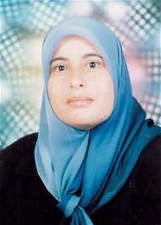 |
Mrs. Fathia A. Mosa obtained her B.Sc. in Chemistry in 1993 from Garyounis University (Libya) and carried out her M.Sc in 2000 at the same university. She did her M.Sc. thesis under the supervision of Professor Natiq A. R. Hatam on the isolation and spectroscopic elucidation of the constituents of Origanum majorana. She worked at Benghazi High Institute for Education (2001 to 2003) and Altahdi University (2003 to 2006) as an Assistance Lecturer and she is currently studying for her Ph.D. at Durham University under the supervision of Dr. Whiting in the area of natural product synthesis.
|
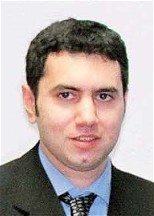 |
Carl Thirsk graduated from the University of Manchester Institute of Science and Technology (UMIST) in 2000 with an MChem in medicinal chemistry, before studying for his Ph.D. under the supervision of Dr. Whiting. His thesis title was 'Stereoselective routes to the polyene macrolide viridenomycin' and he was awarded a Ph.D. from Durham University in 2003. His research interests are focused on the concurrent application of synthetic and physical chemistry with chemical engineering science to aid the determination of reaction mechanism. Carl is a co-founder and CEO of LyraChem Limited.
|
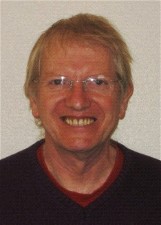 |
Michel Vaultier was borned in Normandy (France). He received his Ph.D. degree from Rennes University in 1977 under the direction of Professor Robert Carrié. He was appointed at CNRS as an “Attaché de Recherche" in 1975. He joined Professor Barry Trost's group at the University of Wisconsin (Madison) for a one year postdoctoral stay in 1978–1979. He is currently Director of Research at CNRS. His main research interests at the moment are devoted to sustainable chemistry, the use of task specific ionic liquids in supported organic synthesis and the development of useful synthetic methods based on boron chemistry.
|
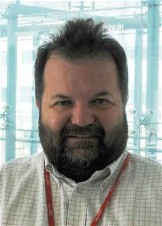 |
Graham Maw received a bachelor's degree in Chemistry from University of Leeds, UK in 1982. He then worked for three years in drug discovery at Hoechst Pharmaceutical Research Laboratories in Milton Keynes, UK before leaving to study for his Ph.D. in natural product synthesis with Professor Steven V. Ley CBE FRS at Imperial College, London (1989). He then went to University of Rochester as a postdoctoral fellow to study with Professor Robert K. Boeckman Jr., and subsequently joined the Sandwich laboratories of Pfizer Global Research & Development in 1991 where he is currently Senior Director, Head of Pain Chemistry.
|
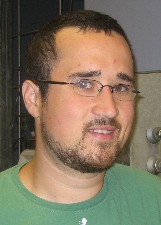 |
Robert B. Lettan II did his undergraduate work at Otterbein College in Ohio and received his B. S. Chemistry degree in 2002. Subsequently, he obtained a Ph.D. degree at Northwestern University under the supervision of Prof. Karl Scheidt. His Ph.D. research involved the use of Lewis base activation of triethoxysilylalkynes and the development of a large-scale preparation of complex tertiary alcohols. Currently, he is a postdoctoral research associate in the group of Prof. Peter Wipf at the University of Pittsburgh where he is working on the use of bicyclobutanes in an approach toward the heterocyclic core structure of mubironine.
|
Copyright © 1921-, Organic Syntheses, Inc. All Rights Reserved